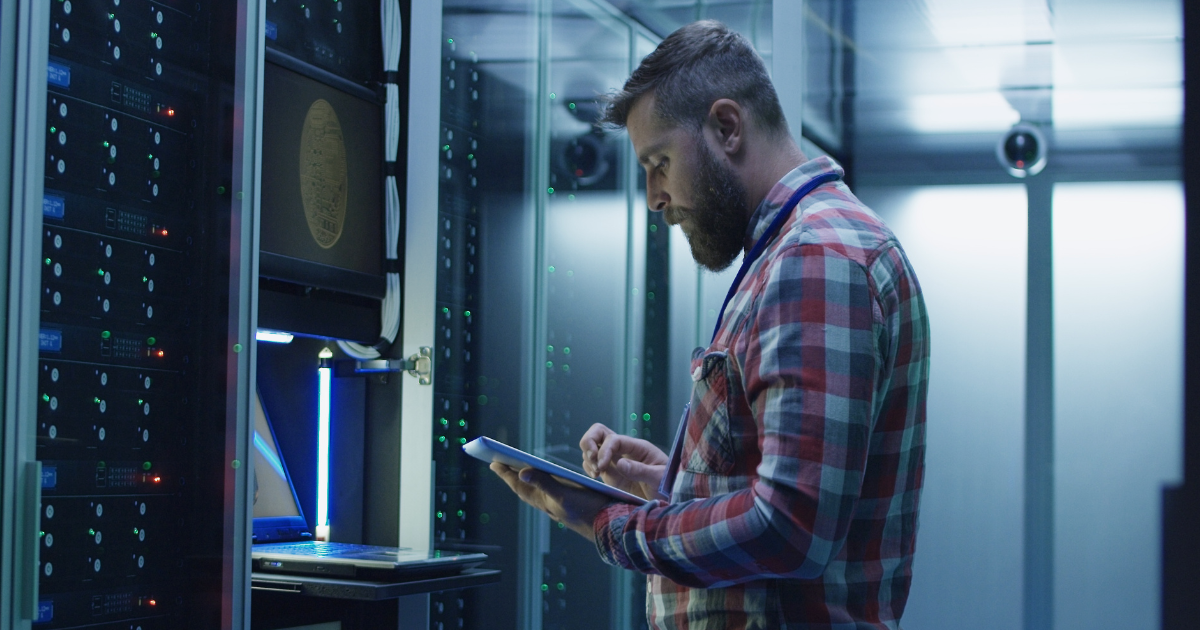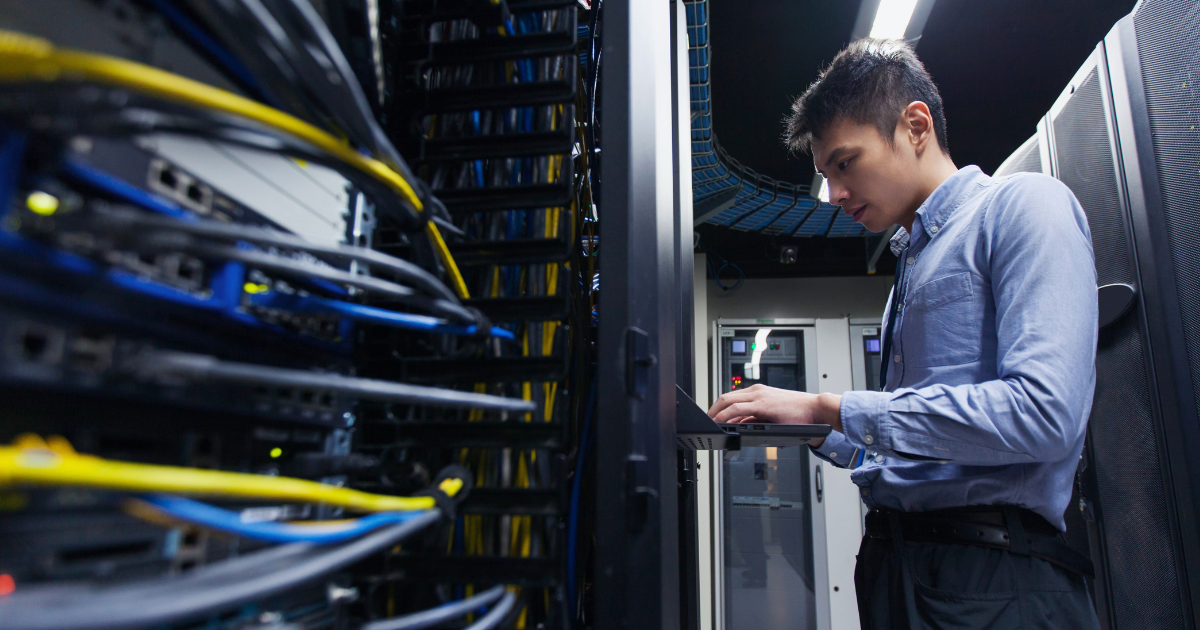
Key takeaways
- Real-time simulation turns outage prevention into a proactive discipline that exposes failure modes before they hit production.
- A data center simulator lets you rehearse power loss, transfer timing, and cooling upsets safely, then roll out fixes with confidence.
- Digital twin simulation improves uptime by validating changes, training operators, and stress-testing upgrades without risking service.
- Selecting the right platform means prioritising hard real-time fidelity, HIL support, scalable models, and open integration.
- Treat simulation as a core reliability practice so every critical response is proven in advance, not learned during an incident.
Outages are extremely costly, industry surveys show 70% of incidents cost at least $100,000, and a quarter soar above $1 million. Facilities face mounting risks from sudden power equipment failures, untested backup sequences, and rising heat loads. Traditional testing provides only partial coverage because simulating worst-case scenarios on the live infrastructure is unsafe. Teams are often left with blind spots and must react to issues after an outage strikes, which is not viable given today’s stakes. Instead of waiting for failure, forward-looking data center operators are adopting real-time simulation as a core reliability strategy. This proactive approach uses high-fidelity digital twins and hardware-in-the-loop (HIL) testing to anticipate problems and fix them in advance, turning uncertainty into confidence in continuous uptime.
Your data center cannot afford a moment of downtime, yet guaranteeing around-the-clock reliability has never been more challenging.
Data center simulation is essential for predictable reliability

Unplanned downtime is a nightmare for data centers that promise 24/7 services. To achieve predictable reliability, you need to identify and address every weak link before it can trigger an outage. This is easier said than done. Even the best maintenance and redundancy plans have limits – for example, backup generators might sit unproven until a crisis, and a complex sequence of events can overwhelm static fail-safes. Data center systems are growing more intricate as high-density computing racks, on-site power generation, and novel cooling technologies are added. Each new component or configuration change could introduce hidden failure modes that traditional tests miss. The pressure to avoid disruption is immense, yet ironically, testing critical failure scenarios in the real facility could cause the very outage you seek to prevent.
Real-time simulation offers a way out of this Catch-22. By creating a comprehensive virtual model of your data center’s power, cooling, and control systems, you can safely simulate everything from utility blackouts to equipment malfunctions without risking live operations. This digital twin runs on specialized real-time hardware to mirror physical behaviours accurately – meaning the model reacts in microseconds just like your actual electrical and mechanical systems. As a result, your team can study worst-case events and fine-tune responses in a controlled setting. There is effectively zero margin for error in a production data center, but in the simulator you have free rein to inject faults and see how systems cope. Issues that would be disastrous in the field become valuable lessons in the lab. Given these high stakes, it’s no surprise that simulation is now viewed as essential to reliability. (In fact, the global market for data center digital twin technology is projected to reach $227.5 billion by 2032, underlining how widely this approach is being embraced.)
Real-time testing exposes failures before they disrupt operations
One of the greatest advantages of real-time simulation is the ability to expose hidden failures long before they disrupt your facility. A well-built data center simulator lets you rehearse countless “what-if” scenarios that would be too risky or impractical to test on site. With real-time simulation, teams routinely examine critical failure modes such as:
- Backup power transfer glitches: Simulate a sudden utility outage to verify that uninterruptible power supplies (UPS) and diesel generators kick in seamlessly. This reveals any timing misalignment or breaker issue in the transfer sequence that could otherwise leave your servers in the dark.
- UPS battery or inverter failures: Model extended power loss and heavy loads to stress-test your UPS systems. You might discover weak batteries, overloaded inverters, or control firmware bugs – all of which are leading outage causes (nearly half of data center outages stem from power failures, and 40% of those involve UPS issues).
- Generator startup delays: Virtually run through generator black-start procedures to ensure backup generators fire up and synchronize on time. Simulation can pinpoint fuel supply problems or auto-start settings that would prevent generators from carrying the load during a real emergency.
- Cooling system emergencies: Introduce worst-case heat scenarios, such as a CRAC unit failure on the hottest day of the year, to check that temperatures remain stable. This safely tests whether redundant cooling and airflow management respond fast enough to avoid thermal shutdowns (cooling faults account for only about 13% of outages, but a single cooling failure at high densities can still bring down equipment).
- Distribution and breaker failures: Emulate faults in power distribution units, transformers, or switchgear to verify that protection devices isolate the problem and prevent cascading outages. These trials can expose mis-coordinated breaker settings or single points of failure in the electrical design that would otherwise remain invisible until a real fault occurs.
- Control system or human error scenarios: You can even simulate operator mistakes or errant control signals – for instance, an incorrect breaker command or a failed automatic transfer switch – to see how the system reacts. With humans implicated in a large share of outages, practicing failure scenarios in a simulator helps refine procedures and build staff confidence under duress.
When you systematically test these scenarios in the digital twin, you catch and correct latent flaws on your own terms. The end result is a far more robust facility – when a real crisis hits, your backup power and cooling systems will have been effectively battle-hardened in advance, making unplanned downtime exceedingly unlikely.
Digital twin simulations boost uptime and confidence

Embracing a data center digital twin dramatically improves uptime while giving your team greater confidence in the facility’s resilience. A digital twin is essentially a living virtual replica of your data center that becomes an ongoing part of operations and planning. This approach yields multiple interlocking benefits:
Proactive outage prevention through foresight
A digital twin lets you identify and fix vulnerabilities before they affect production, fundamentally changing your maintenance strategy from reactive to proactive. Engineers can perform exhaustive single-point-of-failure analyses on the model, systematically hardening the design in ways that would be impossible to do on a live system. This kind of foresight prevents costly downtime by ensuring every critical path has been vetted and reinforced. Not surprisingly, organizations that adopt digital twins and real-time monitoring often see dramatic reliability gains. In fact, implementing accurate digital twin models has been shown to decrease equipment downtime by up to 50%, simply because so many potential failure modes get resolved in advance. The facility no longer has to “learn by failure” – the learning happens in simulation, sparing your uptime.
Optimizing performance and stress-testing upgrades
Beyond preventing outright failures, simulation helps you optimize how the data center runs. For example, you can experiment with load distribution on backup generators, fine-tune cooling setpoints for efficiency, or verify that power systems meet new Tier requirements – all within the twin. When planning changes or expansions, the digital twin serves as a risk-free sandbox. Want to integrate a new on-site battery storage system or support higher rack densities? You can first model the upgrade in detail and simulate peak stress conditions. If the model exposes any weaknesses – say a transfer switch that needs a higher rating or a cooling loop that struggles under added load – you can redesign and test again. This iterative, simulation-based approach means that by the time you implement changes in the real facility, you have full confidence they will work as intended. The digital twin effectively de-risks innovation: even as your data center grows and changes, you maintain rock-solid reliability because every tweak has been validated under worst-case virtual conditions.
(Digital twins also tend to enhance team knowledge and decision-making. A virtual testbed for change planning gives operators a safe space to build expertise – as one industry expert notes, it’s an environment where mistakes have no impact on live systems. That shared insight translates into more decisive action and fewer missteps during real emergencies.)
A digital twin lets you identify and fix vulnerabilities before they affect production, fundamentally changing your maintenance strategy from reactive to proactive.
Selecting the right data center simulator for your needs

Not all simulation tools are created equal, so choosing the right platform is crucial to get these reliability benefits. You’ll want a data center simulator that aligns with your technical requirements and use cases. Keep the following factors in mind as you evaluate options:
- Real-time fidelity: Make sure the simulator can run your models in true real time (hard real-time) with sub-millisecond precision. High-speed fidelity is needed to accurately mimic electrical transients and control responses. This usually means a simulator with powerful multi-core CPU and FPGA-based processing, rather than a generic software emulator.
- Hardware-in-the-loop capability: If you plan to connect physical devices like actual UPS controllers or building management systems into the simulation, ensure the platform supports hardware-in-the-loop (HIL) testing. HIL capability indicates the simulator can interface with external equipment via I/O and communication protocols while maintaining real-time performance.
- Model breadth and accuracy: The simulator should handle all the domains present in a data center – electrical power (AC and DC), cooling and airflow dynamics, and even IT loads or network behavior if needed. Look for a solution with a robust library of component models (generators, chillers, batteries, etc.) and the ability to import custom models from tools you use (such as MATLAB/Simulink or FMI standards). Accuracy in these models underpins the credibility of your tests.
- Scalability and performance: Assess how large and complex a system the simulator can handle. Can it simulate an entire facility’s one-line power diagram and cooling system in detail? Does it support parallel computation or distributed simulation for scaling up? You want a platform that won’t crash or lag when you push a high-fidelity model of a big data center.
- Integration and usability: A good simulator will integrate smoothly into your workflow. Consider the user interface and automation: does it allow scripting for batch testing of many scenarios? Can it connect with your existing data center infrastructure management (DCIM) or monitoring tools to pull real sensor data into the model? Also evaluate the vendor’s support, documentation, and community – especially if you’re new to real-time simulation, strong technical support can be invaluable.
- Reliability and validation: Finally, look for signs that the simulator technology is proven in mission-critical applications. Who else uses it? Ideally, the platform should have a track record in high-reliability domains (utility grids, aerospace, etc.), which gives confidence that its simulation results are trustworthy. The goal is to choose a simulator that you can rely on as much as any physical test instrument in your lab.
Selecting a simulation platform is an important investment in your reliability strategy. Taking the time to match the tool’s capabilities to your needs will pay off when you start finding issues and verifying fixes with ease. The right simulator becomes an extension of your engineering team – a powerful ally for maintaining uptime.
OPAL-RT’s real-time simulation for data center reliability

When evaluating data center simulation platforms, it becomes clear how critical real-time performance and fidelity are to meaningful results. OPAL-RT’s expertise lies precisely in this area, backed by over two decades of developing high-performance real-time digital simulators and HIL systems used by power grid operators, aerospace engineers, and automotive innovators across many industries. Its open, FPGA-accelerated simulation architecture provides the level of detail and speed needed to accurately model complex power and cooling infrastructure. This level of realism gives your team a rock-solid testing ground for verifying emergency power transfers, fine-tuning control algorithms, or integrating new energy technologies – all without risking live operations.
OPAL-RT approaches real-time simulation not just as a technology vendor, but as a collaborative partner in reliability engineering. The company actively works with energy providers, research labs, and data center operators to tailor simulation setups that mirror their specific systems. By supporting industry-standard modeling tools and flexible interfaces, its platform makes adopting a digital twin seamless rather than disruptive. The overarching philosophy is that proactive simulation should become a natural extension of your reliability program. With this approach in place, data centers gain the confidence that every critical response – from power failovers to cooling emergencies – has been proven in advance, driving unplanned downtime as close to zero as possible.
Common questions
Many data center operators have questions when introducing real-time simulation into their reliability toolkit. Here we address a few fundamental points, from understanding what simulation entails to using digital twins effectively. Gaining clarity on these topics can help your team move forward with a simulation-driven approach to uptime.
What is data center simulation?
Data center simulation means creating a detailed virtual model of your facility’s critical systems (power, cooling, etc.) and using it to predict how they behave under different conditions. Essentially, you recreate all those components in software that runs in real time, mirroring the facility’s actual operations. This lets you safely test scenarios such as power outages or high IT loads without any risk to the live infrastructure. By watching the virtual data center’s response, you can identify and address issues long before they would occur in the real data center.
Why is testing data center systems essential?
Testing is essential because even a small failure can cause a full outage in a complex data center. All the power, cooling, and IT equipment must work in unison, especially during emergencies, or the entire operation could go down. Regular tests ensure that every component and procedure (from backup power transfers to fire suppression triggers) will work correctly under pressure. Even routine maintenance drills can’t cover every edge case – which is why simulation is so valuable for safely exercising worst-case scenarios. Without thorough testing, you’re essentially hoping nothing goes wrong, which is not a reliable strategy given how costly downtime can be.
Which data center simulator is right for my projects?
It depends on your specific needs. If power reliability is your main concern, look for a simulator with strong power system modeling capabilities and support for hardware-in-the-loop testing so you can include real controller hardware. If you also need to simulate cooling and other aspects, choose a platform that supports multi-domain models (electrical, thermal, etc.). You should also consider how well the simulator integrates with your existing design tools and how large or complex a system it can handle. Finally, choose a solution with a proven track record in similar mission-critical projects, so you can trust the simulation results.
How does digital twin simulation help data centers?
A digital twin provides a live virtual mirror of the data center where tests and optimizations can be done with zero risk. The primary benefit is improved reliability: you can simulate outages or equipment failures and resolve weaknesses ahead of time, so they don’t cause real downtime. It also helps optimize performance by allowing you to experiment with cooling strategies or power distribution changes in software before implementing them. Additionally, having a digital twin speeds up planning and problem-solving—new designs can be validated virtually, and past incidents can be replicated to find root causes. Overall, this predictive approach lets a data center avoid surprises and run more smoothly and efficiently.
Integrating real-time simulation into data center operations turns reliability from a reactive scramble into a managed, predictable outcome. Continuous testing and refinement in a virtual setting allow you to anticipate failures and ensure that all backup systems will perform flawlessly when called upon. The result is a data center that delivers true 24/7 availability not by luck, but by design. As digital infrastructure grows more complex, simulation is becoming indispensable for ensuring reliability. Data center leaders who use these techniques avoid costly outages, adapt confidently to new requirements, and maintain the trust of everyone who depends on their services.
EXata CPS has been specifically designed for real-time performance to allow studies of cyberattacks on power systems through the Communication Network layer of any size and connecting to any number of equipment for HIL and PHIL simulations. This is a discrete event simulation toolkit that considers all the inherent physics-based properties that will affect how the network (either wired or wireless) behaves.


